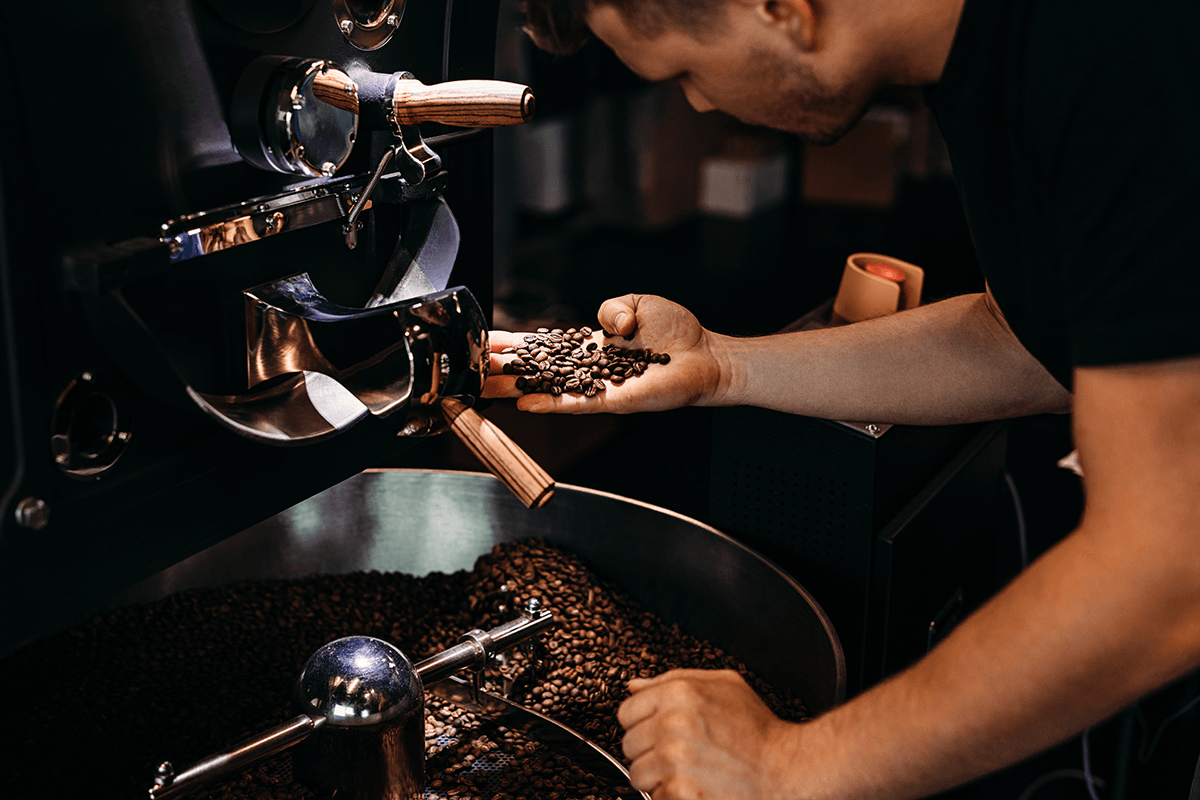One does not simply "roast" coffee in a drum roaster.
Well, fine. One does roast coffee in a drum roaster. In fact, that's about all you can do in a drum roaster. Other than barrel roasting… which is the same thing.
Look, I'm just trying to say it's a process that involves time, patience, and a whole lot of elbow grease. Er, coffee grease.
But if you're up for the challenge, then read on to learn all about how it’s done!
Before We Roast On
Important: Remember that your drum roaster probably has specific instructions for how it should be used, so this article is more of a general overview of how drum roasting is done, and you shouldn't use it to replace a good set of instructions. Like with anything else, be careful, watch what you're doing, and roast at your own risk.
Ok, with all that out of the way—are we ready?
Drum roast, please...
Ugh. Let's just get started.

An Overview of How to Drum Roast Coffee
First, you'll need to gather your supplies. You'll need a drum roaster, of course. You're holding one in your lap right now? Great!
Now you need some coffee beans that are green af. Make sure to get enough beans to fill the roaster—you don't want to run out in the middle of the process. That's a sitcom-level mishap just waiting to happen.

Once you have your green beans and a drum roaster, it's time to get started. First, preheat the roaster to its desired temperature.
Hey, wait—shouldn't you be reading the instruction manual for your expensive dangerous drum roaster? Well, I'm not the roaster here, so back to it, I guess!
Next, you'll want to add the beans and begin the stirring process. It's important to keep stirring throughout the process to ensure even roasting.
As the beans roast, they'll go through several stages. First, they'll turn a light brown color and might give off a grassy smell.
Then, they'll get darker and smell a little more like roasting coffee.
Finally, they'll get really dark, and begin to smoke. So make sure you stop the heat and take them out when they're at the darkness you want.

Now, it's time to cool those beans down. One way to do this is to carefully pour them into a metal colander and give them a few good stirs. Then, let them sit for half an hour or so to cool.
Once they're completely cooled, you can store the coffee in an airtight container. Make sure to label the container with the date and type of beans—after all, you don't want to forget what you've just roasted!
And that's basically it. You've successfully roasted coffee in a drum roaster. Of course, you could alter all kinds of variables and try to perfect your craft over many years, but who's got that kind of time?
You could also just buy Black Insomnia's extreme caffeine drum roasted coffee and save a few hundred dollars and about a million steps. Your call.
Oh, and don't forget the most important part: enjoy your damn coffee. You roasted it (or bought it from Black Insomnia, if you were smart). Now drink it!






